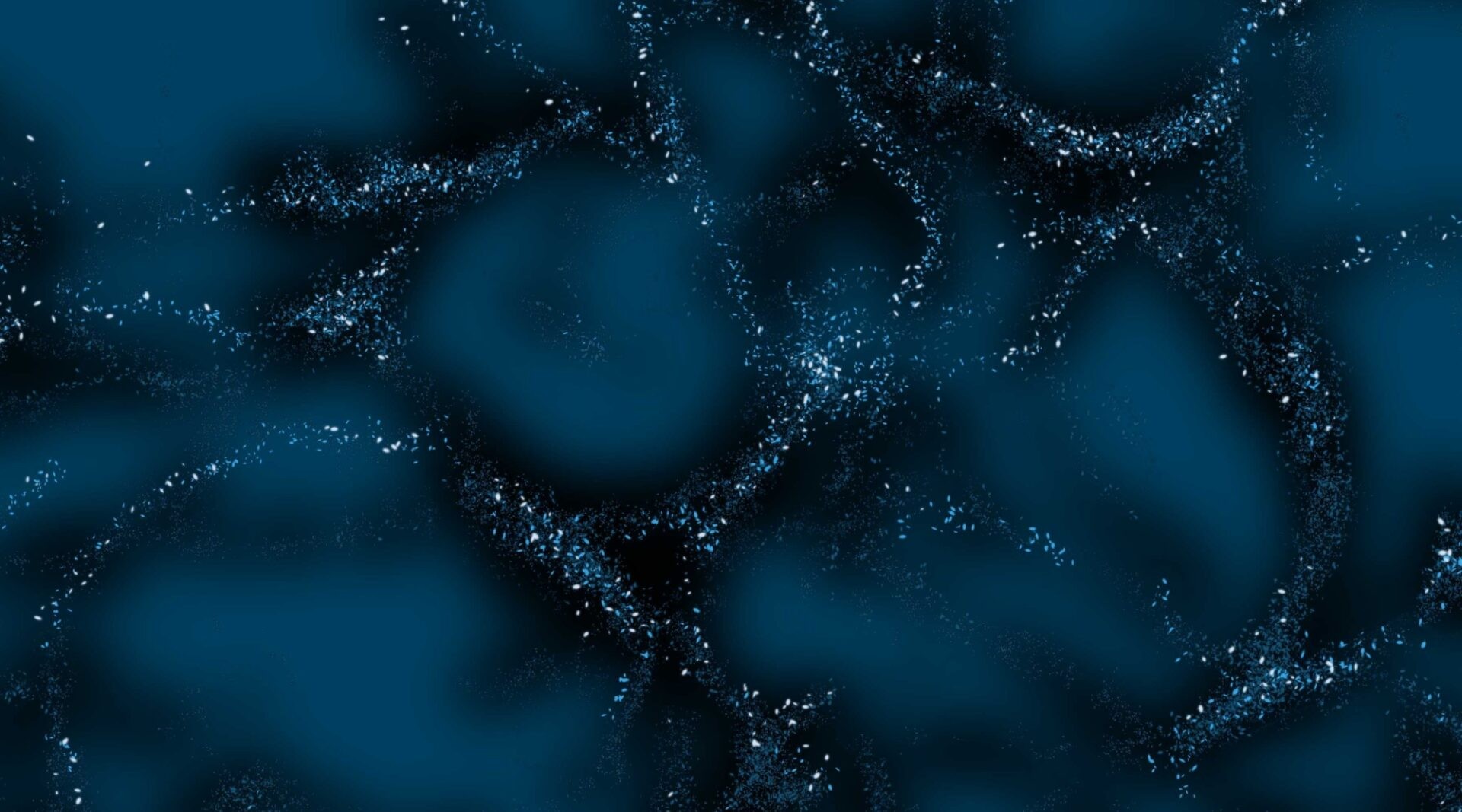How Does Dark Matter Affect the Evolution of the Universe?
Astronomers and astrophysicists are always looking up, trying to understand what exists out in the Universe and why it looks the way that it does. When we use telescopes to gaze at the sky and collect as much light as we can, we find billions of galaxies. But these galaxies aren’t just randomly distributed throughout the Universe. They follow a structure that’s driven by the force of gravity and guided by the presence of dark matter.
Dark matter is called dark matter because that’s pretty much all we know about it—it’s a particle in the Universe that has mass and doesn’t give off or reflect light. We have never been able to directly see one of these dark matter particles—although there are exciting experiments looking for them—even though they make up more than 80% of all of the matter in the Universe. What we can see is the gravitational effect dark matter has on galaxies and their distribution throughout the Universe. The properties of dark matter affect how the Universe evolved, like how galaxies form and grow as well as how they clump together to form the largest structure in the Universe: the cosmic web.
Currently, scientists think that right after the Universe began with the Big Bang, everything looked pretty similar in all directions. There was almost the same amount of hydrogen, photons, and dark matter everywhere. But tiny clumps of matter did exist and because of gravity, these clumps continued to grow larger and larger, eventually becoming big enough to turn gas into stars and form galaxies. The size and mass of a clump (or “halo") that can turn into a galaxy depends on the properties of dark matter. So, if we want to learn more about dark matter, we have to understand how many galaxies there are at a given size. If we see a whole bunch of small galaxies, that would support our current best guess for the properties of dark matter. Rubin Observatory will catalog over 10 billion galaxies in the Southern hemisphere night sky, including a big sample of small galaxies—if they exist!
In addition to the properties of the galaxies themselves, dark matter also drives how many galaxies we see in a given direction. Most galaxies will be found flowing together along long, filamentary structures. That leaves most of space as empty voids without many galaxies. The sizes of these filaments and voids depend on what dark matter is. To really understand and measure this large scale structure of the Universe, we need to be able to observe huge patches of the sky while also being able to see the faintest, most distant galaxies. This is exactly one of the things Rubin Observatory was designed to do.
The more we know about what dark matter might be, the more we’ll know about how the Universe formed and evolved, and the closer we’ll be to detecting dark matter directly. Check back here for the exciting discoveries scientists will make when Rubin Observatory begins operating!

